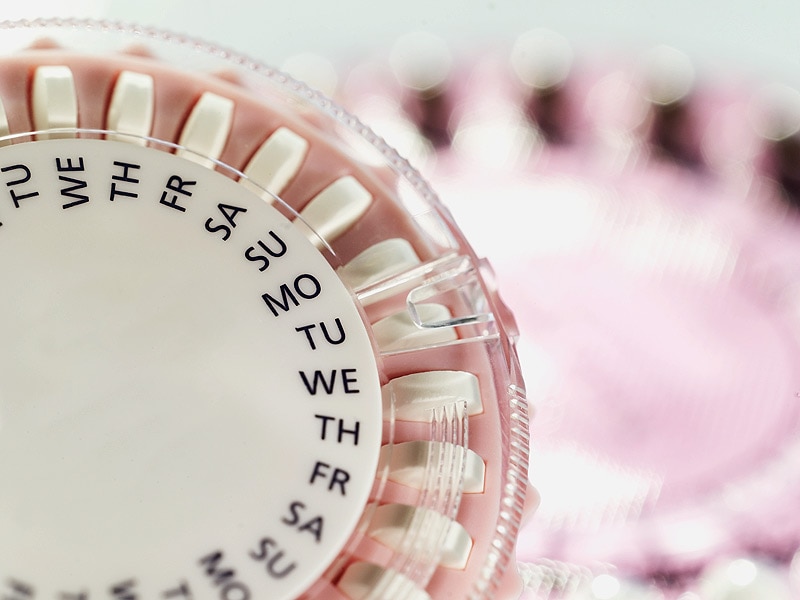Health Centers > Sexual Health Center > Sexual and Gender Identity Disorders > Male Infertility
Male Infertility
Male Infertility Introduction
Infertility is defined as the inability to conceive after 1 year of unprotected sexual intercourse. Infertility affects approximately 15% of couples. Roughly 40% of cases involve a male contribution or factor, 40% involve a female factor, and the remainder involve both sexes. The evaluation of male infertility is undertaken methodically to acquire several kinds of information.
Male Infertility
- Introduction
- Male reproductive physiology
- Diagnosis of Male Infertility
- History
- Physical Examination
- Laboratory
- Adjunctive Tests
- Semen Leukocyte Analysis
- Antisperm Antibody Test
- Hypoosmotic Swelling Test
- Sperm Penetration Assay
- Sperm-Cervical Mucus Interaction
- Chromosomal Studies
- Cystic Fibrosis Mutation Testing
- Y Chromosome Microdeletion Analysis
- Radiologic Testing
- Testis Biopsy & Vasography
- Fine-Needle Aspiration "Mapping" of Testes
- Semen Culture
- Causes of Male infertility
- Treatment of Male infertility
Male Infertility
Primary infertility affects 15-20% of married couples. Approximately one-third of cases ...
Before discussing the diagnosis and treatment of male infertility, a review of basic reproductive tract physiology is in order.
Male Infertility Treatment
A. General Measures
Education with respect to the proper timing for intercourse in relation to the female's ovulatory cycle as well as the avoidance of spermicidal lubricants should be discussed. In cases of toxic exposure or medication-related factors, the offending agent should be removed. Patients with active genitourinary tract infections should be treated with appropriate antibiotics.
B. Endocrine Therapy
Hypogonadotropic hypogonadism may be treated with chorionic gonadotropin once primary pituitary disease has been excluded or treated. Dosage is usually 2000 international units intramuscularly three times a week. If sperm counts fail to rise after 12 months, FSH therapy should be initiated. Menotropins (Pergonal) is available as a premixed vial of 75 international units of FSH and 75 international units of LH. The usual dosage ranges from one-half to one vial intramuscularly three times per week.
C. Retrograde Ejaculation Therapy
Oligospermic patients with retrograde ejaculation may benefit from α-adrenergic agonists (pseudoephedrine, 60 mg orally three times a day) or imipramine (25 mg orally three times a day). Medical failures may require the collection of postmasturbation urine for intrauterine insemination or electroejaculation in the case of absent emission.
D. Varicocele
Surgical approaches to varicoceles may be accomplished via a scrotal, inguinal, or laparoscopic approach. More recently, percutaneous venographic approaches have been developed, obviating the need for an anesthetic.
E. Ductal Obstruction
The level of obstruction must be delineated via a vasogram prior to operative treatment. Mechanical obstruction of the ejaculatory duct may be corrected by transurethral resection and unroofing of the ducts in the prostatic urethra. Obstruction of the vas deferens is best managed by a microsurgical approach, and a vasovasostomy or vasoepididymostomy may be required.
F. Assisted Reproductive Techniques
Advances in reproductive technology may provide alternatives to patients who have failed other means of treating reduced sperm counts and motility. Such measures include intrauterine insemination, in vitro fertilization, and gamete intrafallopian transfer.
Brugh VM 3rd et al: Male factor infertility: evaluation and management. Med Clin North Am 2004;88:367.[PMID: 15049583]
Hirsh A: Male subfertility. BMJ 2003;327:669.[PMID: 14500443]
Makar RS et al: The evaluation of infertility. Am J Clin Pathol 2002;117(Suppl):S95.[PMID: 14569805]
Male Infertility
Primary infertility affects 15-20% of married couples. Approximately one-third of cases result from male factors, one-third from female factors, and one-third from combined factors. It is thus critical to have simultaneous evaluation of both partners. Clinical evaluation is warranted following 6 months of unprotected intercourse. Endocrinologic profiles and detailed semen analyses are the cornerstones of laboratory investigations after the history and physical examination. Oligospermia is the presence of less than 20 million sperm/mL in the ejaculate; azoospermia is the absence of sperm. As spermatogenesis takes approximately 74 days, it is thus important to review events from the past 3 months.
Male Infertility Clinical Findings
A. Symptoms and Signs
The history should include prior testicular insults (torsion, cryptorchidism, trauma), infections (mumps orchitis, epididymitis), environmental factors (excessive heat, radiation, chemotherapy), medications (anabolic steroids, cimetidine, and spironolactone may affect spermatogenesis; phenytoin may lower FSH; sulfasalazine and nitrofurantoin affect sperm motility), and drugs (alcohol, marijuana). Sexual habits, frequency and timing of intercourse, use of lubricants, and each partner's previous fertility experiences are important. Loss of libido and headaches or visual disturbances may indicate a pituitary tumor. The past medical or surgical history may reveal thyroid or liver disease (abnormalities of spermatogenesis), diabetic neuropathy (retrograde ejaculation), radical pelvic or retroperitoneal surgery (absent seminal emission secondary to sympathetic nerve injury), or hernia repair (damage to the vas deferens or testicular blood supply).
Physical examination should pay particular attention to features of hypogonadism: underdeveloped secondary sexual characteristics, diminished male pattern hair distribution (axillary, body, facial, pubic), eunuchoid skeletal proportions (arm span 2 inches > height; upper to lower body ratio < 1.0), and gynecomastia. The scrotal contents should be carefully evaluated. Testicular size should be noted (normal size approximately 4.5 × 2.5 cm, volume 18 mL). Varicoceles should be looked for in the standing position and on occasion may be appreciated only with the Valsalva maneuver. The vas deferens, epididymis, and prostate should be palpated.
B. Laboratory Findings
Semen analysis should be performed after 72 hours of abstinence. The specimen should be analyzed within 1 hour after collection. Abnormal sperm concentrations are less than 20 million/mL. Normal semen volumes range between 1.5 and 5 mL (volumes < 1.5 mL may result in inadequate buffering of the vaginal acidity and may be due to retrograde ejaculation or androgen insufficiency). Normal sperm motility and morphology demonstrate 50-60% motile cells and more than 60% normal morphology. Abnormal motility may result from antisperm antibodies or infection. Abnormal morphology may result from a varicocele, infection, or exposure history.
Endocrinologic evaluation is warranted if sperm counts are low or if there is a clinical basis (from the history and physical examination) for suspecting an endocrinologic origin. Testing should include serum FSH, LH, and testosterone. Elevated FSH and LH and low testosterone (hypergonadotropic hypogonadism) are associated with primary testicular failure, which is usually irreversible. Low FSH and LH associated with low testosterone occur in secondary testicular failure (hypogonadotropic hypogonadism) and may be of hypothalamic or pituitary origin. Such defects may be correctable. In such cases, serum prolactin should be checked to exclude pituitary prolactinoma.
C. Imaging
Scrotal ultrasound may detect a subclinical varicocele. Vasography may be required in patients with suspected ductal obstruction.
D. Special Tests
Azoospermic patients should have postmasturbation urine samples centrifuged and analyzed for sperm to exclude retrograde ejaculation. Azoospermic patients and patients with ejaculate volumes less than 1 mL should have fructose levels determined on the ejaculate. Fructose is produced in the seminal vesicles and if absent in the ejaculate implies obstruction of the ejaculatory ducts.









